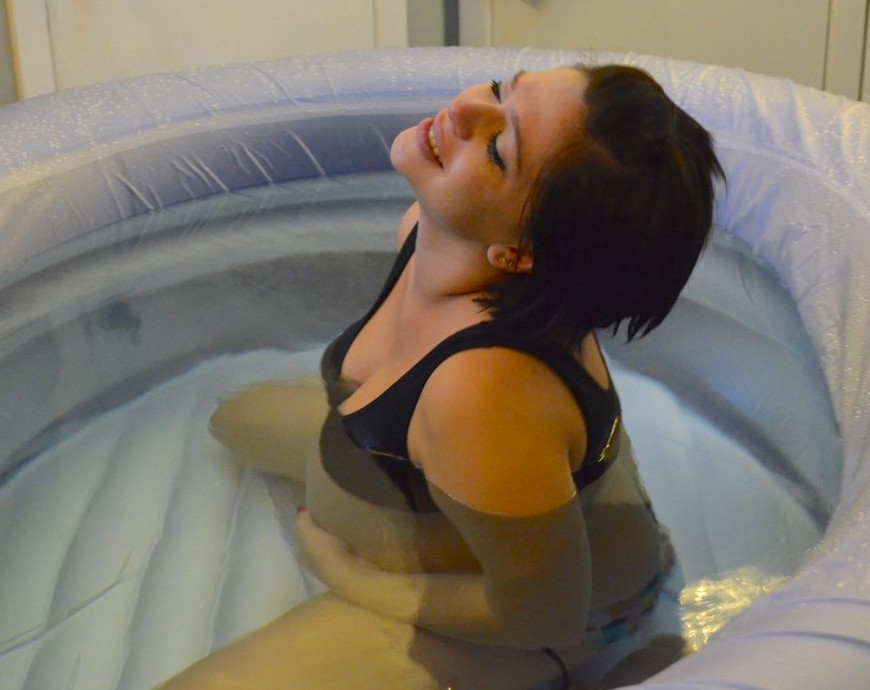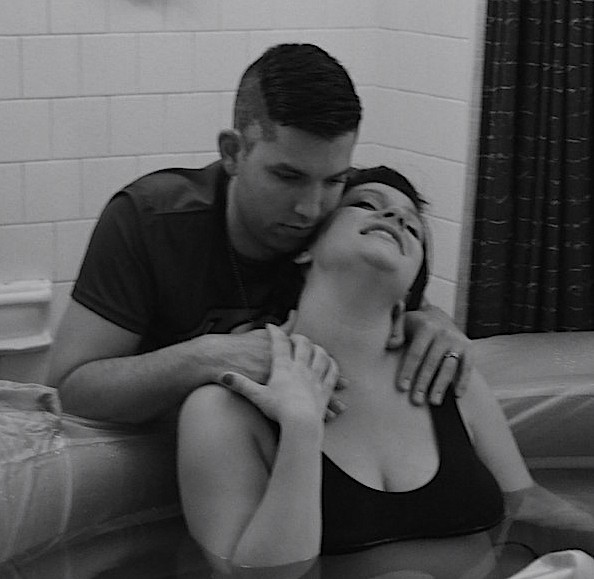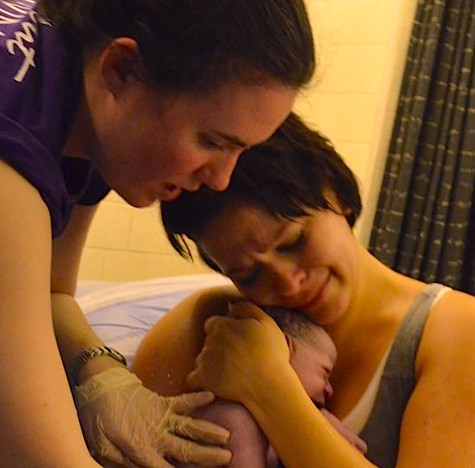I was 41 weeks 4 days and had, had several bouts of practice labor that never went anywhere so I was growing discouraged. Baby had certainly kept me on my toes between having to be manually turned (ecv) twice the last time being at 38 weeks as well as going so late, so I had lots of chances to practice deep meditation. The thing that helped me the most was a play list of songs who’s lyrics were very meaningful to me and my faith. When I was really worried or upset I would turn on the worship songs and close my eyes and sing even during my practice contractions. And I found that when I did it was far easier to relax and embrace them.
The reason this was important to me was the realization that contractions are there to open your cervix. If you relax through them they are not as painful and they are far more effective.
I learned this through the hypnobirthing course I took as well as the book “Ina May’s guide to childbirth” I highly recommend both in preparation for birth.
The morning of his birth I woke early with very strong waves that were coming every 4 minutes. I ate breakfast took a bath, walked around and after an hour they were still coming but this time accompanied by show, loose bowels and other symptoms that let me know this time was likely the real deal. We called everyone and began preparing the birth space. I realized that they were spacing out and again became discouraged. Around 1 pm we went in to the midwife who did a membrane sweep and we began homeopathics. They immediately started coming every 3 minutes and didn’t stop. We headed home from the birth center.
I labored for an hour before my midwife called and decided the team needed to come. I bounced on the ball and stayed upright as much as possible.
At one point my sweet husband wrapped his arms around me. I grabbed his face and kissed him. Bam fireworks. My body immediately responded by giving me strong intensely pleasurable sensations. I kissed him some more. They were definitely contractions but instead of hurting they just made me knock kneed and want to kiss him more. My entire body buzzed. I felt madly in love and connected with him more then ever before. We did this for a good 30 minutes before the midwifes arrived and it was pure nirvana.

They checked me and I was a 7. I got in the tub and it was euphoric. I relaxed in the tub and let the warm water envelop me. I still couldn’t believe that I was actually going to meet my sweet baby boy soon.
One of my very favorite songs came on and I began singing. Soon a contraction began and it was strong. I started to tense up but then I remembered from the days before that when I sang, it became easier and so I continued to sing along and the most incredible thing happened. The pain went away, my body relaxed and I soaked in the gorgeous lyrics and beautiful melody floating across the water bringing praises to my maker. Tears of gratitude poured from my eyes and I just said thank you over and over again.
I stayed here for a couple of hours, singing through contractions, rocking back and forth, praying, and making out with my super sexy man. I was so relaxed and so grateful for this amazing day that the birth team was having a challenge determining when I was contracting.

After a while I got out of the tub and drank water, had a small snack of apples and apple juice and labored on the toilet for a while. I had loose bowels and felt the urge to poop every time I had a contraction, because of this I noticed my body tensing so when I sat on the toilet I completely relaxed and everything began intensifying. I felt him dropping, and my bag bulging. Though the contractions were more intense, as long as I sang or my husband rubbed my shoulders I could manage them well and felt them opening my cervix.
I decided to lay down for a while and asked my midwife to break my water because I felt like it would speed things up. It did. The second she broke it he moved down deep into my pelvis. The pressure was intense and I decided to move back to the tub. I was a 9 and my body was working hard to bring him into the world. I leaned against the tub and my precious midwife wrapped her arms around my shoulders.

I decided at that point that I was ready for him to be born and wasn’t scared anymore about tearing. I accepted the possibility and let go. I said out loud,
“My cervix is fully open, He is not too big. He will fit, I won’t tear.”
And literally 2 contractions later I was
pushing. 7 minutes later I was holding my beautiful son. I didn’t tear
and was so relieved to finally be holding him that I cried happy tears. I
wanted him to be born into a peaceful worship filled environment and I
got my wish. I am still so amazed when I look back at the video and am
absolutely blown away by how peaceful and pleasurable his birth was.
Jorge Ryan was 8#10oz, 21 inches long and pure perfection.
